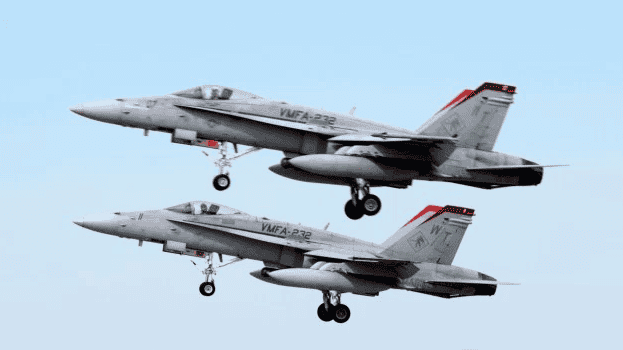Marines ground Hornets for safety review in the wake of recent mishaps

The Marines have been having a hard time with their force of F/A-18 Hornets. The situation was bad enough that a couple of months ago, they pulled nearly two dozen from Davis Monthan Air Force Base's preservation facility. But things have gotten worse, with three crashes, two of them fatal, over the summer.
The result: The Marines recently called a timeout. All three Marine Air Wings were ordered to halt F/A-18 operations for 24 hours while commanders figure out a way to reduce the accident rate on these planes. As reported by the USNI Blog, each MAW is required to take two such days each year for purposes of sharing "best practices" and to figure out how to improve the Marine Corps' Hornets' state of readiness. Lt. Gen. Jon Davis, the Marine Corps' Deputy Commandant for Aviation, who ordered the stand-down, will receive reports on the readiness of Marine Hornet squadrons.
Service-wide groundings of a particular model of airplane have happened before. F-15s across the United States Air Force were grounded in November 2007 after one Eagle assigned to the Missouri Air National Guard fell apart during a flight. It was later discovered that a longeron (that connects the aircraft's skin to the frame) failed, causing the aircraft's mid-flight disintegration. The Air Force retired its F-15A/B models as they, too, aged. A report from The Los Angeles Times at the time of the F-15 crash stated that many F-15s were already under flight restrictions due to concerns about metal fatigue.
Despite the issues that the F-15 force had with fatigue and flight time, the F-22's production was stopped at 187 airframes in 2009, forcing a number of F-15C airframes (roughly 178 – almost ten squadrons' worth) to keep soldiering on, despite their advancing age (the last F-15C serial number for the United States Air Force was from Fiscal Year 1986 – over three decades ago).
The Marines use the F/A-18C/D versions of the Hornet, while the bulk of the Navy's force has transitioned to F/A-18E/F Super Hornets. The Super Hornets have longer range and greater payload, as well as more modern electronics and some signature reduction. The Marines did not buy Super Hornets, choosing to hold out for the F-35. But because of F-35 program delays, the Marine Hornets have had to hold out longer than planned.
This situation is ironic in one sense: The F/A-18 first entered service with the Marine Corps, which was seeking to replace aging F-4 Phantoms. The Hornet drew raves for ease of maintenance and its availability. Now, the F/A-18s are the aging mounts, and the Marines are struggling to keep them airborne.
SHARE
